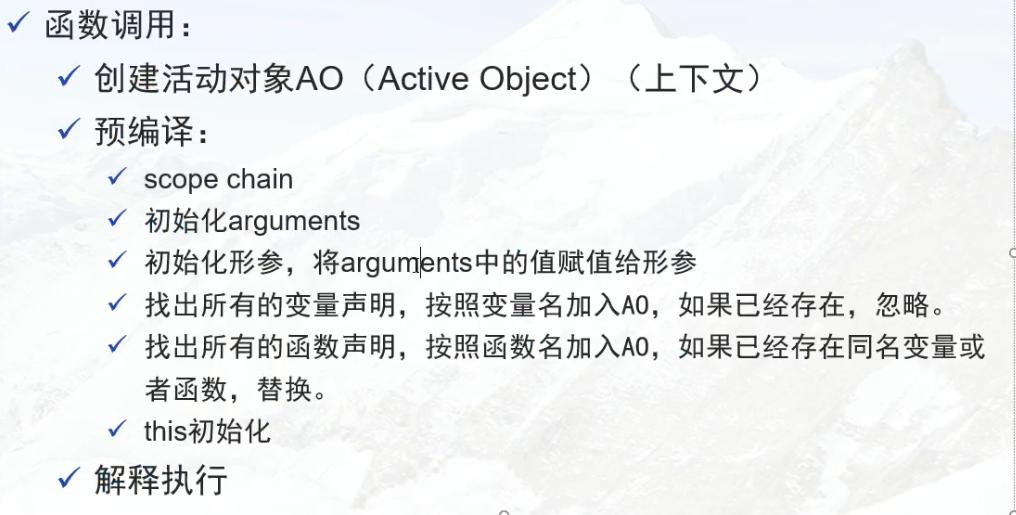预编译

脚本的预编译
1.//没有 var 的变量都不是变量声明,全部认为window的全局变量,不参与预编译
console.log(aa);//undefind
var aa = 0;
console.log(aa);//0
console.log(bb);
bb = 5;
console.log(bb);

2.//脚本中命名相同的函数会覆盖变量,只有函数覆盖变量,变量不能覆盖函数。
console.log(xx);
function xx(){
console.log("qq");
}
var xx = 1;

3.脚本中相同命的函数,后面函数 会覆盖前面函数
ff(1)
function ff(a){
console.log("ff1");
}
function ff(a,b){
console.log("ff2");
}

函数的预编译
基本同上
例1
var scope = 'globe'; function f(){ console.log(scope);//undefind var scope = 'locl'; console.log(scope);//locl
}
f() console.log(scope);//globe
预编译过程
1.找出变量声明
scope:undefind;
f:function;
f-AO:
scope:undefind;
预编译结束
输出
f-AO输出
undefinde
locl
GO输出:
globe
例2
var scope = 'global'; function t(){ var scope = 't-local'; function t2(){ console.log(scope); var scope = 't2-local'; console.log(scope); } t2() console.log(scope) } t() console.log(scope);
预编译过程
先拿到变量
GO:
scope:undefinde
t:function
t-AO:
scope:nudefind
t2:function
t2-AO:
scope:undefinde;
输出:
t2-AO输出:
undefined;
t2-local;
t-AO:
t-local;
GO:
global
例三
function test(x,x){ console.log(x);//function x= 5; console.log(arguments);//[12,5] function x(){} } test(12,13)
预编译过程
先拿到变量
test:function
test-AO:
arguments:[12,13];//绑定形参,后面的覆盖前面的;
x-arguments[1] = 13;
x:function;
x=5;
x-arguments[1]=5;
输出
function
[12,5]
例4
var b = 'cba'; function a(a,a){ console.log(a); console.log(b); var b = 'abc'; a() function a(){ console.log(a); console.log(b); } }
a(5,10)
预编译过程
先拿到变量
GO:
b:undefined;
a:function;
a-AO:
arguments:[5,10];
a-arguments:[10];
b:undefined;
a:function;
输出
a-AO:
function
undefined
a.a-AO:
function
abc



